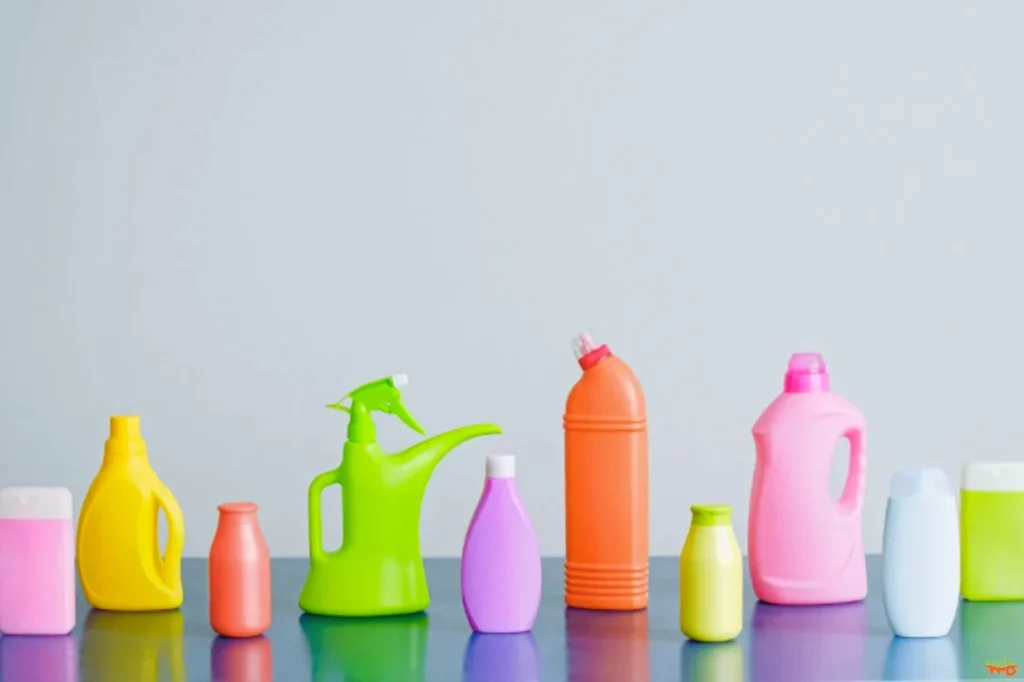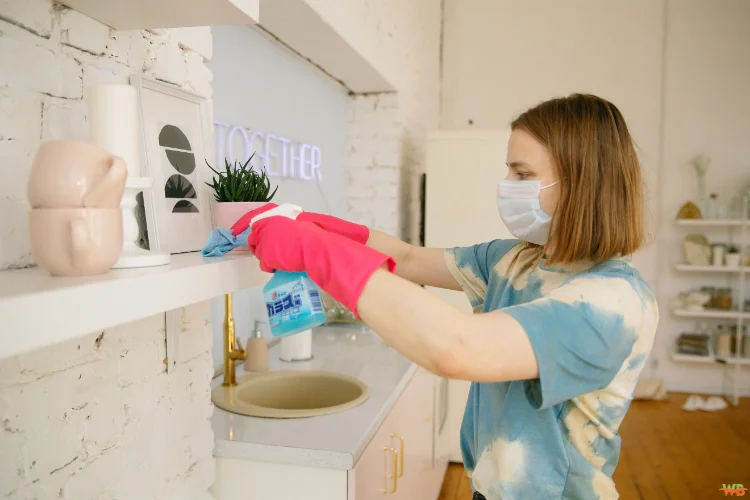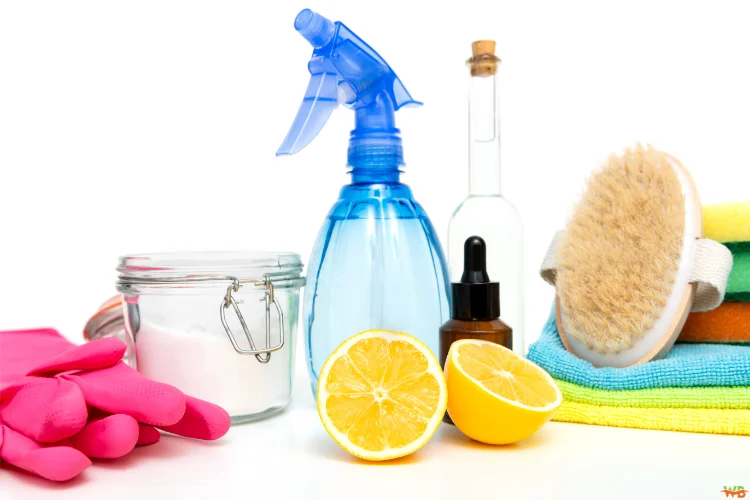
When you reach for a bottle of cleaner or detergent to clean your stuff, the last thing you might consider is how it could affect your health. Yet, startling reports reveal that the average household has a cocktail of toxic chemicals, many of which are found in everyday cleaning products such as detergents. These chemicals can pose significant risks to your well-being. From irritating your skin to triggering chronic illnesses, the impact is far-reaching.
This article will explore the hidden dangers of toxic cleaning products and introduce safer, more effective alternatives that can help protect your family and the environment.
The Harmful Effects of Chlorine Bleach and Ammonia on the Body
Chlorine bleach and ammonia are staples in many household products like detergents, but they come with a host of health risks that often go unnoticed. Chlorine bleach can irritate the eyes, nose, and throat and, when mixed with other chemicals like acids or ammonia, produces toxic gases. Prolonged exposure to these fumes can lead to respiratory distress and, in severe cases, chemical burns in the lungs.
These substances are especially hazardous for individuals with asthma or other respiratory conditions, as they can exacerbate symptoms.
A safer alternative to such harsh detergents is MelaPower, a concentrated laundry detergent by Melaleuca: The Wellness Company, which uses natural enzymes rather than caustic ingredients to remove stains and odors. Unlike traditional cleaners, it’s formulated to protect your health while delivering effective results.
Melaleuca’s commitment to safety doesn’t stop at cleaning performance. Their products are 99% biodegradable, making them an eco-conscious choice that reduces plastic waste and harmful environmental impacts. By switching to their innovative solutions, you can enjoy a sparkling clean home without compromising your health or the planet.
Look up The Wellness Company online to learn more about them.
How Toxic Cleaning Products Affect the Skin and Eyes

The largest organ in the body, the skin is particularly susceptible to the negative effects of cleaning solutions that contain toxins. Direct contact with harsh chemicals can lead to redness, burns, and even long-term conditions like eczema.
Eyes are equally sensitive to cleaning product fumes or accidental splashes. Chemicals like chlorine can irritate the eyes, leading to redness, tearing, and in severe cases, corneal damage. Wearing gloves and protective eyewear while cleaning can reduce these risks, but switching to non-toxic alternatives is the most effective way to safeguard against harm.
The Effects on Hormonal and Reproductive Health
One of the lesser-known but serious impacts of toxic cleaning products is their effect on hormonal and reproductive health. Chemicals like phthalates and triclosan, often used in fragrances and antibacterial products, are known endocrine disruptors. They mimic or interfere with the body’s natural hormones, potentially leading to irregular menstrual cycles, reduced fertility, and complications during pregnancy.
Research has also linked prolonged exposure to these chemicals to developmental issues in children. Pregnant women, in particular, are advised to avoid cleaning products with synthetic fragrances or antibacterial agents to protect both their health and their babies. Choosing non-toxic alternatives is a simple but vital step in reducing these risks.
The Respiratory Risks of Cleaning Fumes
Cleaning fumes from sprays, bleach, and other products can harm the respiratory system. When these chemicals are inhaled, they irritate the lining of the airways, causing coughing, wheezing, and shortness of breath. For individuals with asthma or pre-existing respiratory conditions, this exposure can trigger severe symptoms or worsen chronic illnesses. Over time, regular use of products with harmful fumes increases the risk of developing chronic respiratory problems, including bronchitis. Children and elderly individuals are particularly vulnerable, as their lungs are more sensitive to these irritants. While proper ventilation can minimize exposure, it’s not a complete solution.
Switching to safer, non-toxic cleaning options reduces the release of harmful fumes and protects respiratory health. Avoiding aerosol sprays and heavily scented products is a good starting point. These small changes can create a healthier indoor environment and significantly reduce the risk of respiratory complications.
How Toxic Cleaners Weaken the Immune System

Toxic cleaning products can silently weaken your immune system over time. Many cleaning agents contain chemicals like triclosan, which, when overused, disrupt the body’s microbiome. This natural ecosystem of beneficial bacteria plays a vital role in defending against infections. Constant exposure to harsh cleaners also increases the body’s toxic load, making it harder for the immune system to function optimally. Chemicals absorbed through the skin or inhaled can accumulate in the body, leading to chronic inflammation, which further taxes the immune system.
People with compromised immunity or those recovering from illnesses are particularly at risk. Switching to gentler, natural cleaners helps reduce the chemical burden on your body, allowing your immune system to focus on protecting against actual threats. A cleaner home doesn’t have to come at the expense of your health—choosing safer products supports your body’s natural defenses.
The Link Between Toxic Chemicals and Allergies
Allergic reactions are a common side effect of exposure to toxic cleaning products. Chemicals such as formaldehyde can irritate the respiratory system, skin, and eyes, triggering allergic responses. Over time, repeated exposure can sensitize the body, making you more prone to allergic reactions. Symptoms include sneezing, watery eyes, skin rashes, and even hives. Individuals with a history of allergies or asthma are especially vulnerable, as these chemicals can exacerbate pre-existing conditions.
Synthetic fragrances in cleaning products are among the top culprits, as they contain undisclosed chemical mixtures that can provoke reactions. Opting for fragrance-free and hypoallergenic cleaning alternatives can drastically reduce the likelihood of allergy flare-ups. Understanding the triggers in your cleaning routine and replacing them with gentler options ensures a healthier, allergen-free environment for you and your family.
The dangers of toxic cleaning products extend far beyond the surface of your home. From immediate effects like respiratory irritation to long-term risks such as hormonal disruption, these chemicals can silently harm your body. By becoming aware of the hidden dangers and making safer choices, you can protect your health and your loved ones.
Switching to non-toxic alternatives and practicing caution during cleaning can drastically reduce exposure to harmful substances. Your health and well-being are worth prioritizing—start today by reevaluating the products in your cleaning arsenal and opting for safer, healthier options.

I’m Salman Khayam, founder of Wellbeing Junction. I synthesize trusted information from research and expert guidance to create clear articles across health, wellness, and lifestyle topics.
Disclaimer: Content is for informational purposes only and is not medical advice. Consult a qualified expert regarding personal health or specialized questions.
Discover more from Wellbeing Junction
Subscribe to get the latest posts sent to your email.

